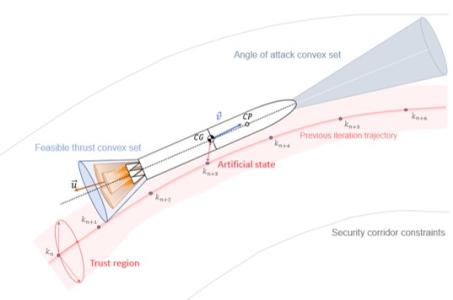Fault Tolerant Control of Clustered Rocket Engines

To design, implement and verify fault tolerant control methodologies for clustered engines of launch vehicles.
A clustered rocket engine is made up of smaller, easier to manufacture thrusters that can be controlled individually instead of a single, more expensive combustion chamber: thrust vector control (TVC) can be achieved via differential throttling, reducing the need for heavy gimbals and actuators.The proposed activity targets the development of TVC methodologies that are able to effectively cope with independent throttling capability as well as handle failures in one of the cluster?s engines. Since the thrust allocation is a mathematically underdetermined problem, controlling clustered engines with minimal actuation effort is challenging, particularly for asymmetric and reusable launchers (whose performance is more impacted by engine throttling constraints). Moreover, robust fault detection and isolation (FDI) is mandatory to achieve fault tolerance.FDI concerns the online health monitoring of each engine with a decision-making functionality. The applicability of different model-based (e.g. system identification or observation), data-driven (e.g. machine learning) and combined techniques at engine and cluster levels shall be investigated during the activity, together with sensor data fusion.Once a fault is detected, the faulty engine(s) must be autonomously isolated and the TVC allocation law accordingly adapted. This adaptation may range from a change of coefficients in a fixed-structure law to a deeper control reconfiguration, but its robustness in the face of uncertainties and disturbances shall be guaranteed by design. The definition of ?optimal? allocation under failure conditions must also be addressed to ensure minimum degradation of mission performance while system and safety-related constraints remain satisfied.This activity encompasses the following tasks:- Requirements definition under nominal and failure conditions (i.e. acceptable performance vs. mission safety trade-off);- Design of optimal TVC allocation algorithms under nominal conditions;- Design of engine health monitoring and fault detection algorithms;- Design of faulty engine isolation and optimal TVC re-allocation algorithms;- Implementation of the algorithms in a software prototype and verification at simulation level.
